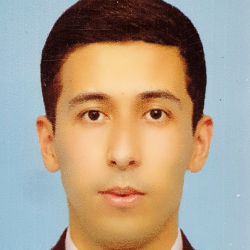APPLICATION OF THE METHOD OF ASSOCIATIONS
IN THE EDUCATIONAL PROCESS
O. Yakubov
Senior teacher, Department of Languages
Chirchik Higher Tank Command and Engineering School
A. Umarov
4th year-cadet of
Chirchik Higher Tank Command and Engineering School
Annotation: association is the relationship between individual definitions, facts, objects, phenomena, as a result of which the mention of one concept evokes the memory of another, combined with it. Associations can arise according to various characteristics.
Keywords: color, taste, shape, sound, action, purpose, quantity.
The use of the method of associations in the classroom contributes to the development of creative activity and logical thinking of students, improves memorization mechanisms, and enriches vocabulary. Often there is no rational explanation why one image or another evokes the idea of another. Due to the fact that each person's associations can be purely individual, the guys are not afraid to make mistakes and feel free, show significant activity in the lesson. Accordingly, interest in the educational process increases and motivation in learning increases.
A significant factor affecting the effectiveness of the application of the associative method in educational activities is the teacher's emotionality - his facial expressions, gestures, and expressiveness of speech. It is important to remember that you cannot impose your associations on children. Any work should have a specific goal, enhance cognitive activity and be carried out systematically.
The associative method can be used in the lesson, both at the stage of calling, and in the process of work for better memorization of the material. It can be used when studying any topic of all subjects of the program. In some cases, the teacher may stipulate in advance that only words belonging to a certain part of speech - nouns, adjectives, verbs, will be accepted for consideration.
At the challenge stage, students offer their associations to a specific term, concept, and phenomenon. Relationships are recorded by the teacher on the board. There is nothing wrong if a certain number of associations do not have a logical explanation. It is worth remembering that the main purpose of using this technique is to arouse interest in the topic of the lesson, to strengthen memory mechanisms. After studying the topic, it is recommended to return to them and analyze them, highlighting subjective and objective ones.
For example, in a biology lesson, there is an acquaintance with the world of plants. The teacher announces the topic of the lesson and asks the children to name their associations with the word "Plants." Students say: life, grass, flowers, trees, bushes, vegetable garden, vegetables, fruits, berries, pot, spring, summer, green. You can fix all the concepts or only those that really matter for the study of the topic. In the second case, the children need to be explained that in this case there are no erroneous opinions, but since there are too many words, only those that will be needed in this lesson will be written. Based on the received scheme, the teacher talks about life forms and their types - trees, shrubs, shrubs and grasses.
The method of association is most widely used for better memorization of the material.
Several exercises can be distinguished.
An associative chain is a collection of concepts, where each subsequent one is associated not with the main concept, but with the previous one. Children can be offered its complete compilation (the first word is given by the teacher), or filling in deliberately made gaps.
For example, in a geography lesson, when studying the topic: "Mountains", the teacher suggests building an associative chain from the main concept. Anyone can take part in the work, calling one word at a time. In each case, the result will be individual; the final word may turn out to be completely unexpected.
Mountains - snow - cold - winter - sledges - holidays.
Mountains - mountaineering - sport - strength - courage.
The second exercise using the associative method is symbolization. Its essence lies in the fact that the children, through color, signs and symbols, depict individual elements of the educational material.
In a literature lesson, for example, a teacher can offer to express the mood of the work, the character and behavior of individual characters, the specifics of events. The most widespread method of associative memorization is based on imagery of thinking.
For example, in Russian lessons, this technique is used to memorize the correct spelling of dictionary words. The spelling is presented in the form of a vivid image. Also, better memorization of vocabulary words is facilitated by the use of visual reference maps, where the spelling is depicted in the form of any memorable image, for example, the letter "O" can be a sun or a funny emoticon. Such cards are first offered by the teacher, later the children make them themselves, using their associations.
The use of the association method makes the lesson fascinating and interesting in a new way every time, develops attention, creative and logical thinking , contributes to better memorization of the material.
References:
-
Архипова, С.В. Ассоциативный эксперимент в психолингвистике / С.В.Архипов // Вестник Бурятского университета. – № 11. – 2011. – с. 6- 9.
-
Бартминьский, Е. Этноцентризм стереотипа: польские и немецкие студенты о своих соседях / Е. Бартминьский. – Москва: Индрик, 1997. – № 1. – С. 12-24.
-
Большой толковый словарь русского языка / С.А.Кузнецов [и др.]// ГРАМОТА.РУ [Электронный ресурс]. – Режим доступа: http://www.gramota.ru/slovari/info/bts/. – Дата доступа: 10.04.2017.
-
Бурыкин, А.А. Анекдоты о чукчах как социокультурное явление (заметки специалиста) – Анекдот как феномен культуры: материалы круглого стола, Санкт-Петербург, 16 ноября 2002 г./ СПб.: СанктПетербургское философское общество, 2002. – С.64-70
-
Верещагин, Е.М., Костомаров, В.Г. Язык и культура / Е.М. Верещагин, В.Г. Костомаров. – Москва: Индрик, 2005. – 1038 с.
-
Верещагин, Е.М., Костомаров, В.Г. Язык и культура: Лингвострановедение в преподавании русского языка как иностранного/ Е.М. Верещагин, В.Г. Костомаров. – Москва: 1990. – 246 с.
-
Глухов, В.П. Основы психолингвистики: учеб. пособие для студентов педвузов / В.П.Глухов. – М.: ACT: Астрель, 2005. – 351с.



























